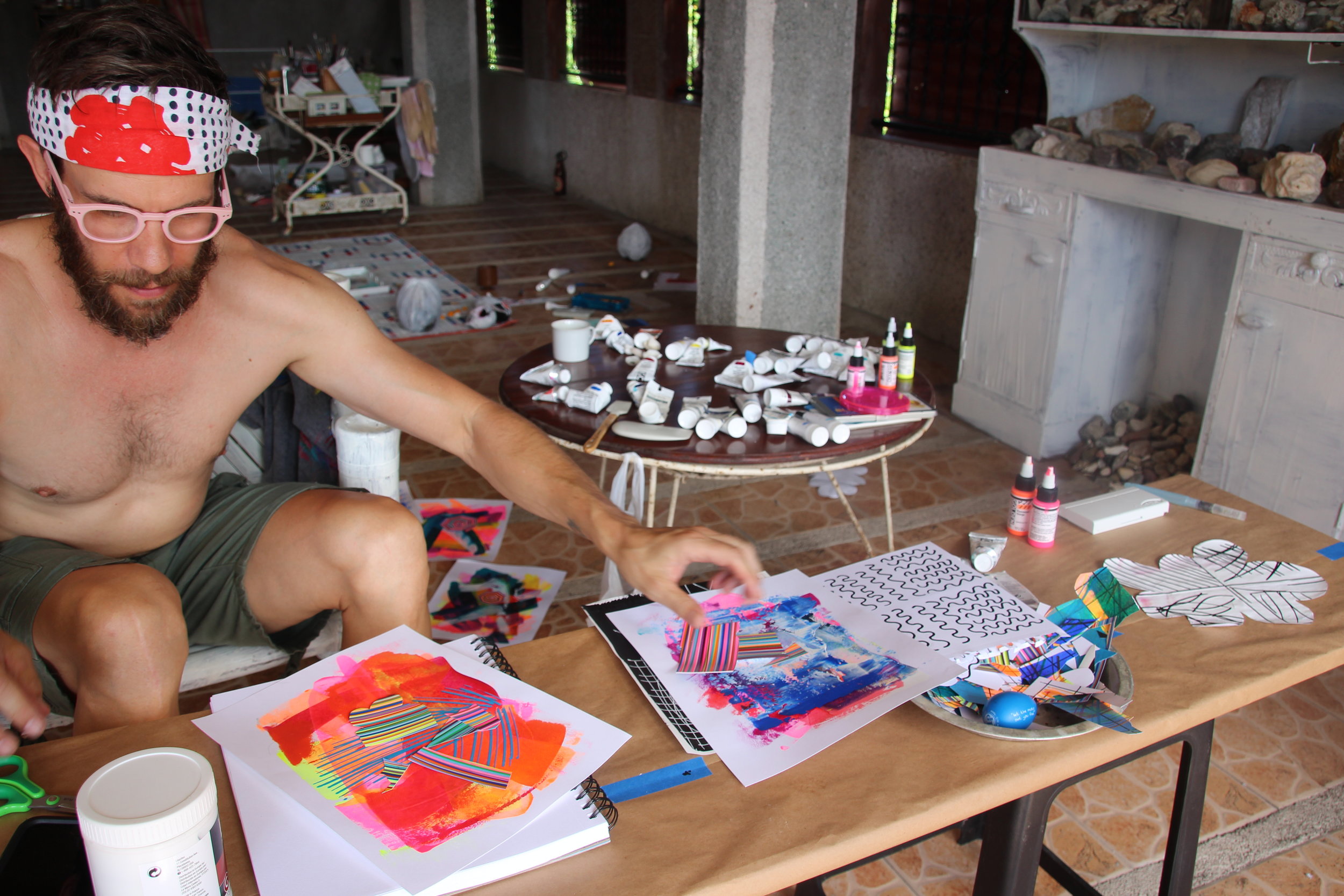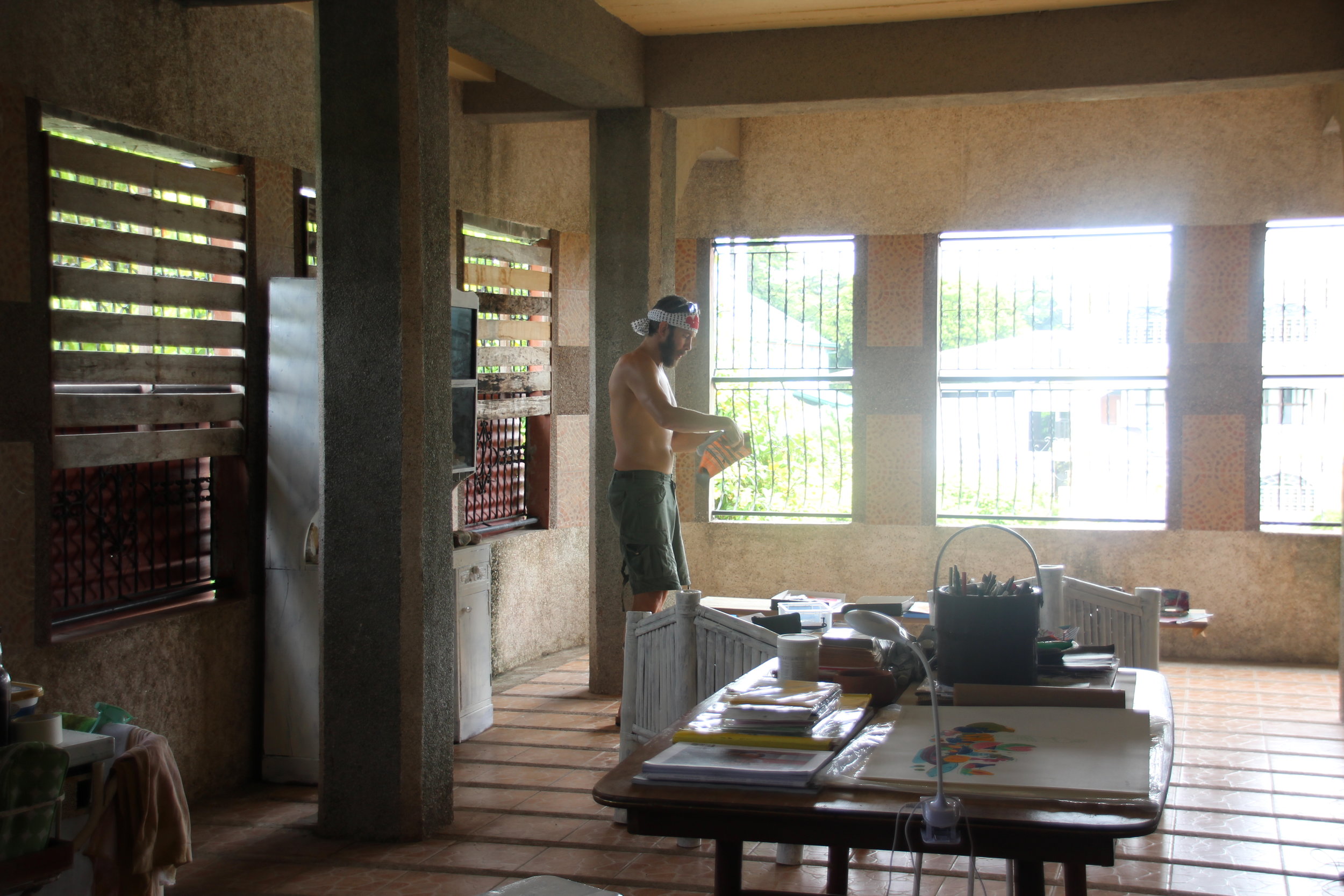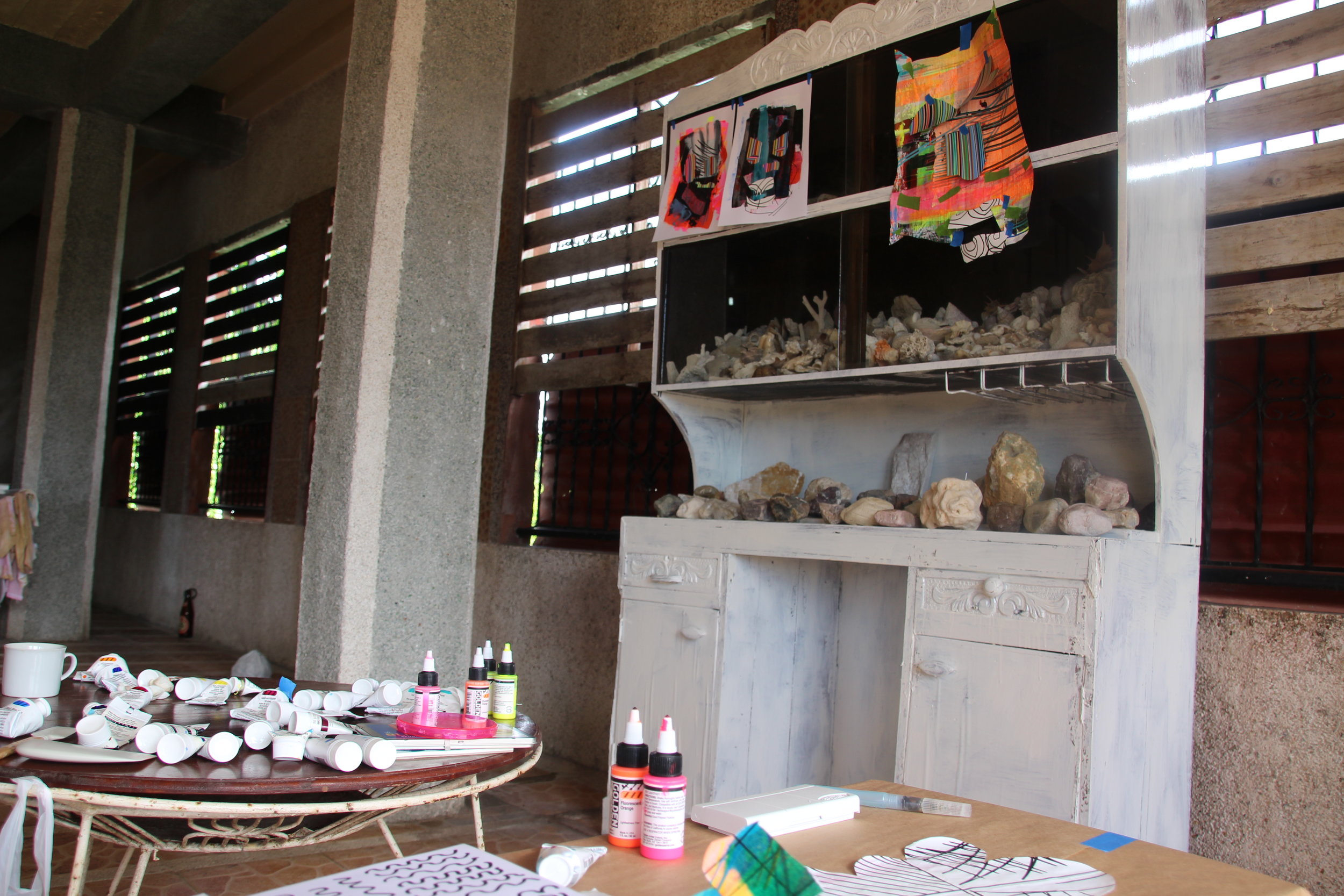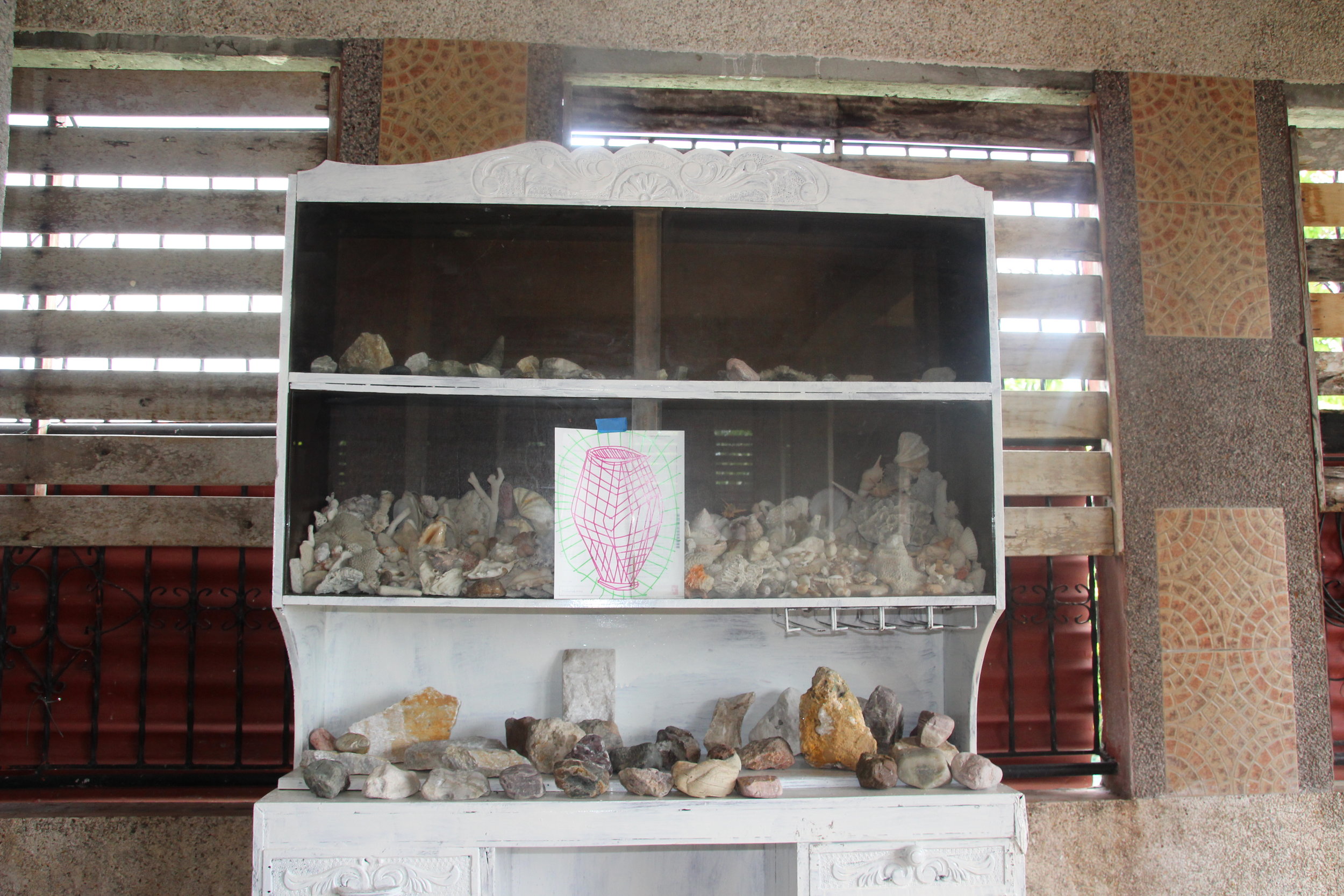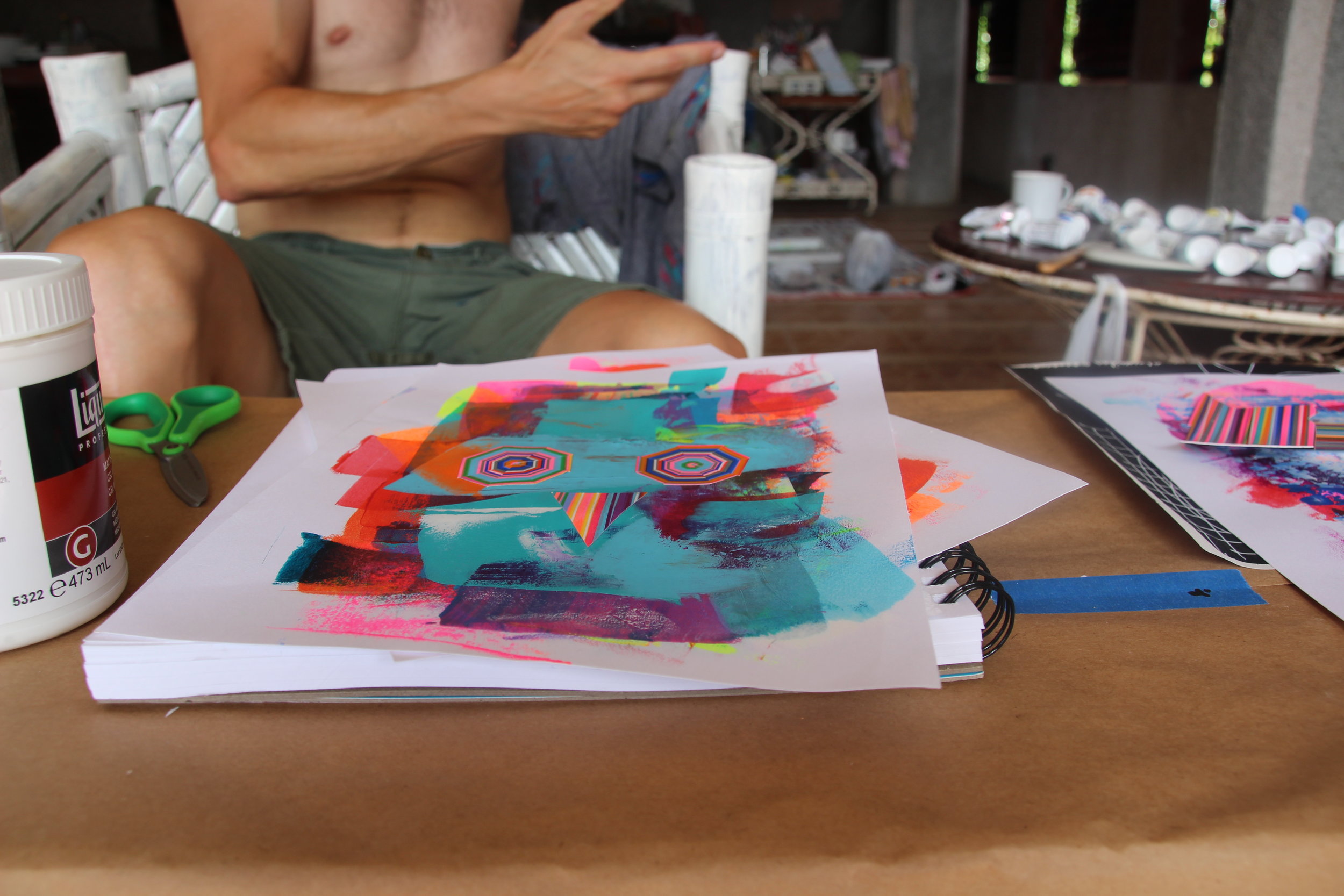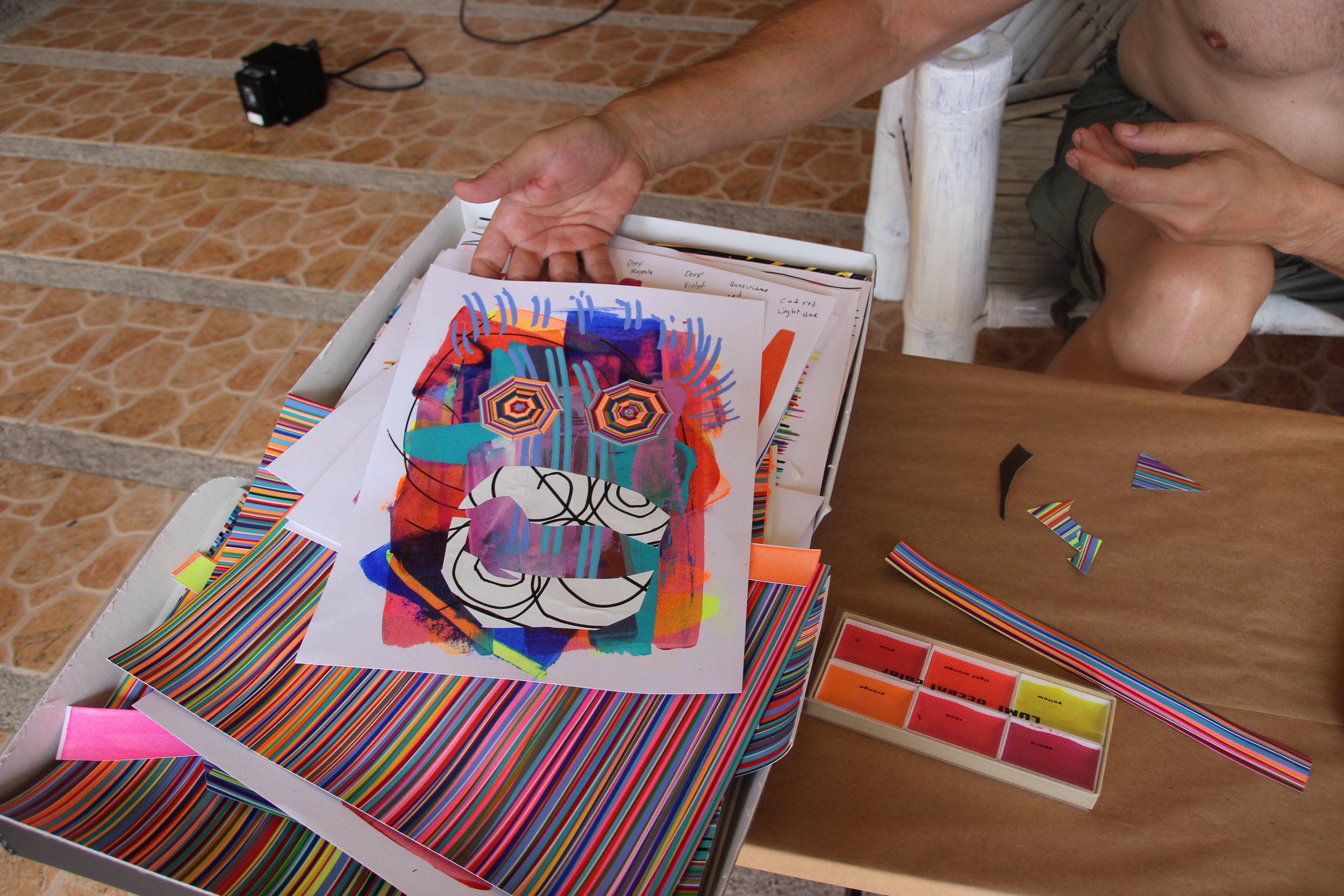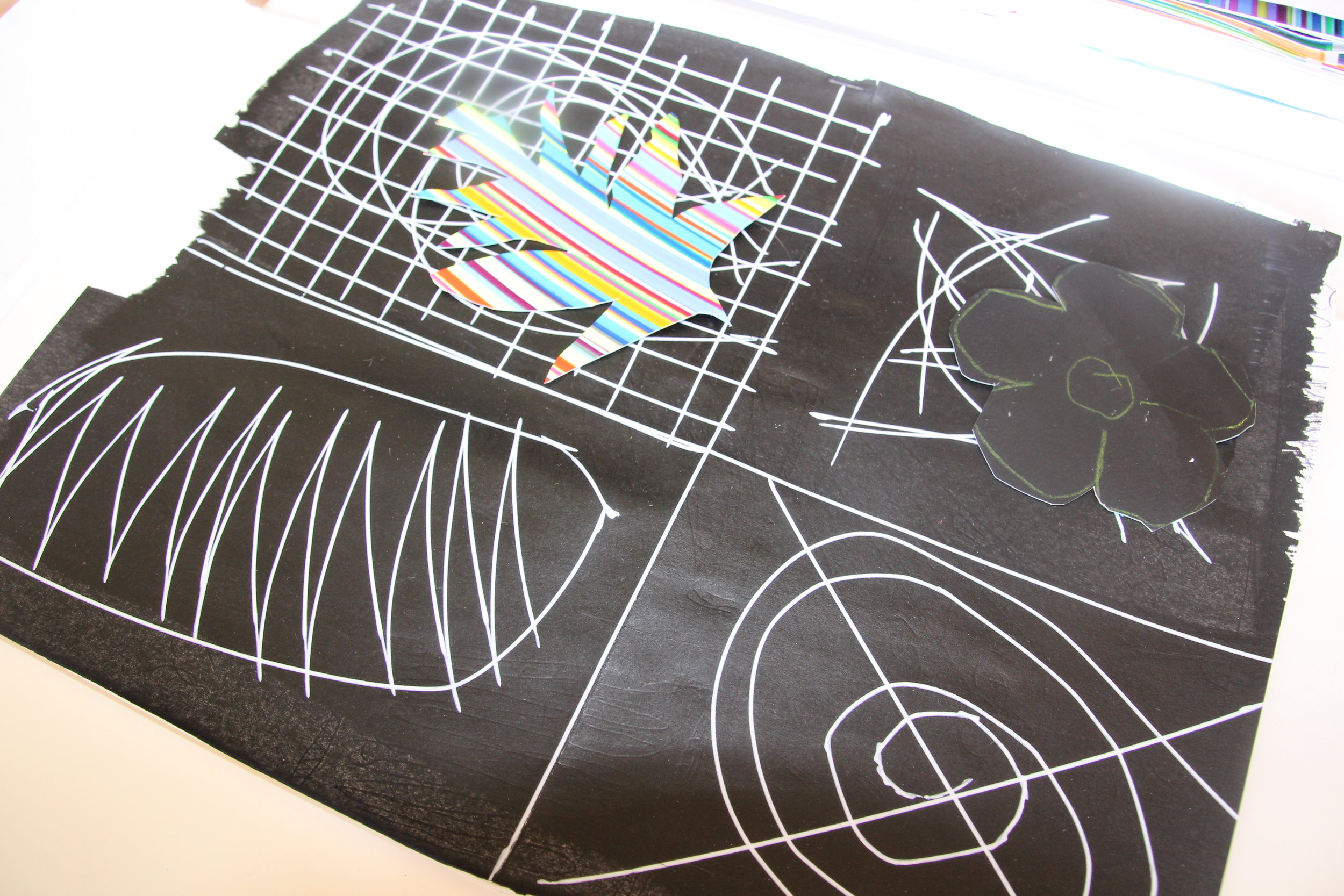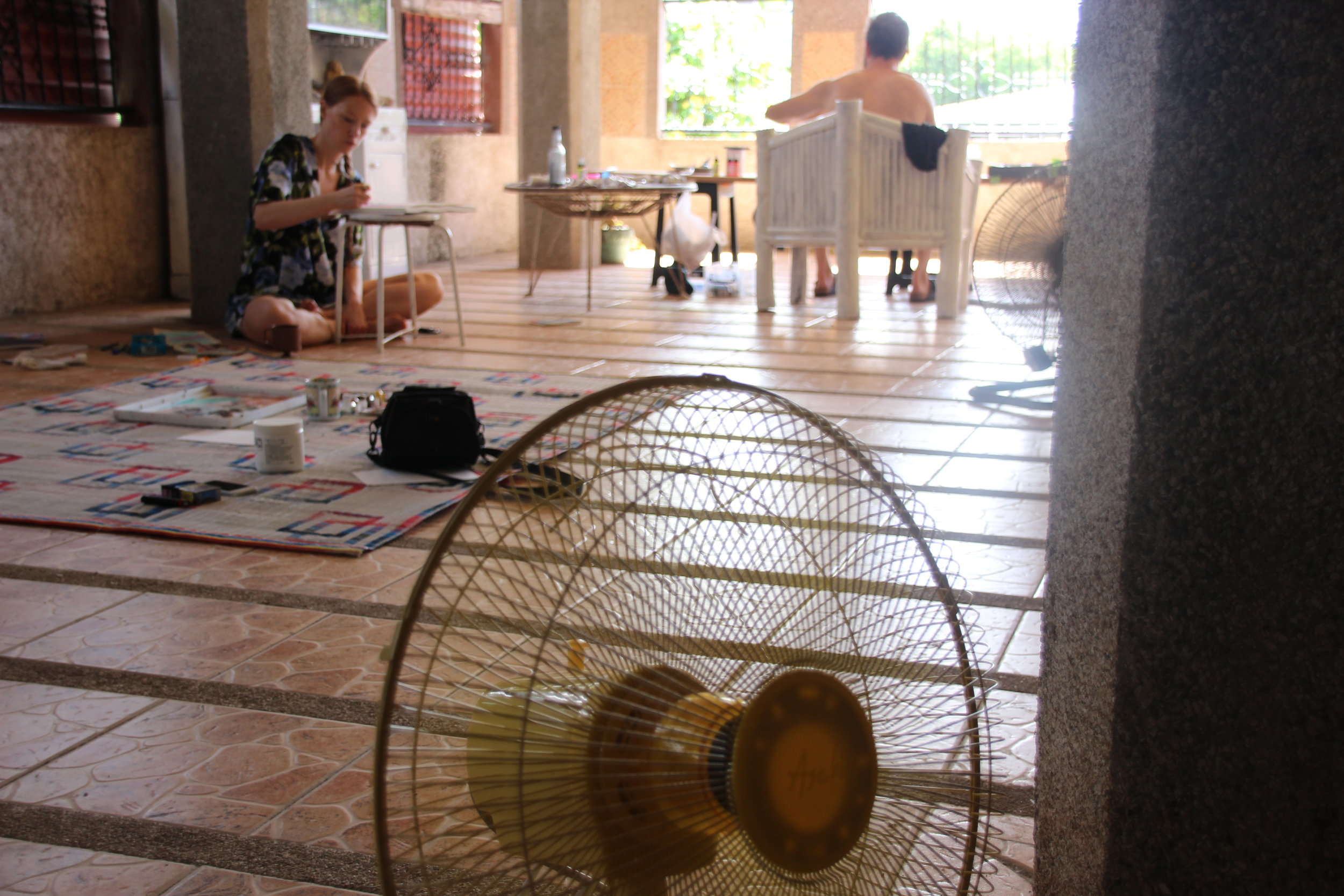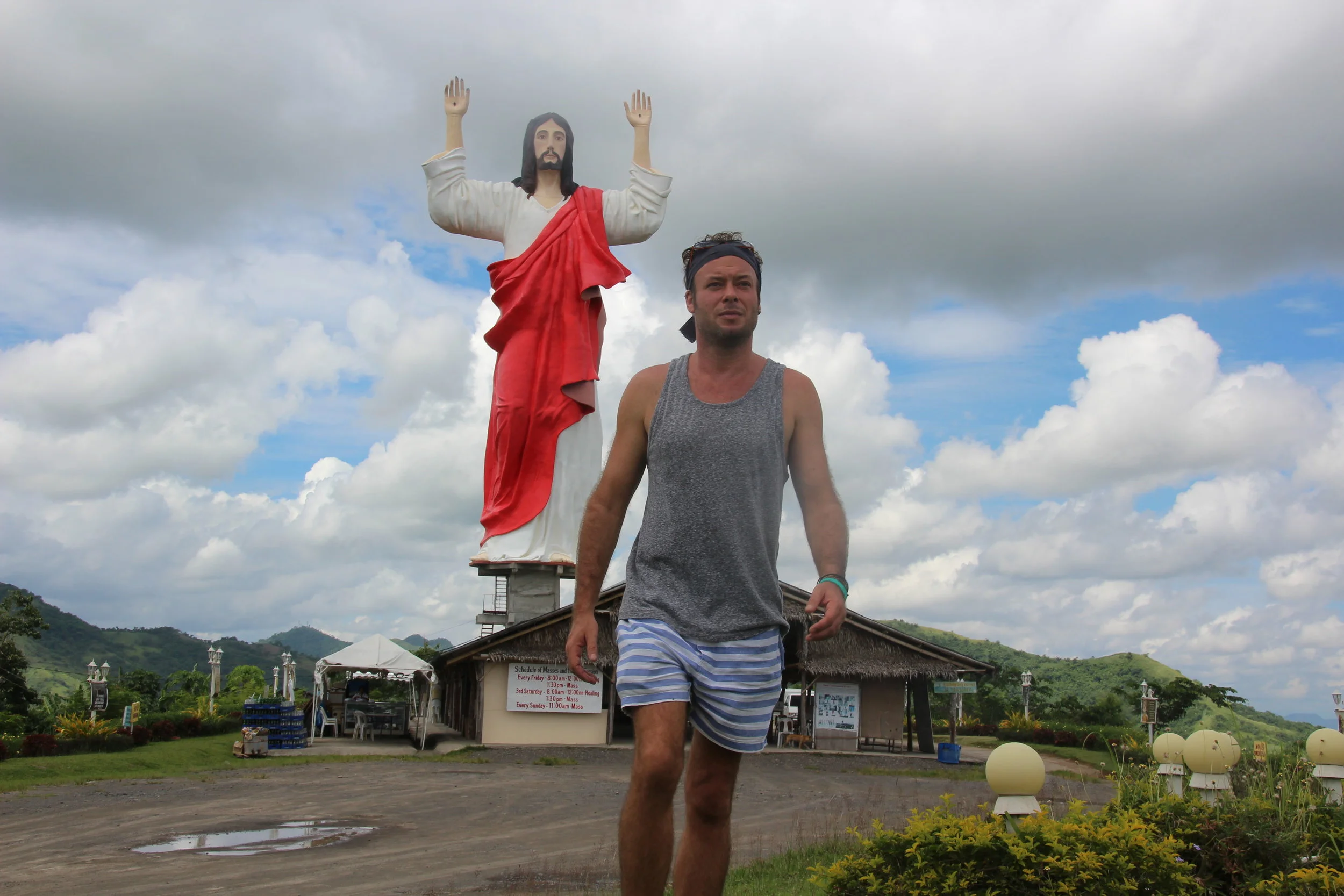Bradley Harms Activates with an Old Batan Past Time
Painter
Vancouver, BC
May 2017
Sport engages the physical while stimulating the imagination. Whether one is an athlete or spectator, both position offer a satisfying return on investment. Sports breed heroes, cultivate camaraderie, focuses energy and define goals. Through these virtues, sports has the capacity to overcome cultural and religious differences.
We took advantage of the resources we had at hand locally
With this in mind, Bradley completed a thoughtful project for his time at Elmo’s House, designed to converse with locals, without the strains of language. Adapted from a previous interactive project of the same name, #citizenpong’s original version first appeared in 2016 in Calgary, Canada, as part of Contemporary Calgary, hosted by New Zones Gallery. Set up inside Golden Inn Restaurant at the heart of the Chinatown district, #citizenpong challenged the conventional modes of display, as well as the exchange between art and viewer.
Utilizing the basic structure of the game, Brad converted the standard ping pong table into an interactive art installation. Under black light, the table surface transforms into a Bradley Harms painting. Swooshes of magentas, deep yellows, teals, blues and reds create a dizzying stained glass effect overlaid with angled black lines that cut the surface diagonally. The painting, while also functioning as the table top was designed to be viewed and played in the dark. Through the act of play, the viewers take part in adding another optical layer to the painting with the glowing ball bouncing throughout the work. Being in a restaurant, the work is further removed not only off the wall, but completely outside the gallery space. Though this experience of active viewing is not new, especially within op art and kinetic art (from which Brads' work operates in,) #citizenpong reignites the optimistic argument that art is made for everyone.
It was procedurally difficult which ended in adventure. It came out of an internal practice that manifested externally. It brought beauty out of rawness. It brought public play out of hermetic practice.
The successful reception of #citizenpong in Calgary, was as much about the people who interacted with the piece, as it is about the work itself. #citizenpong needed the people and the environment for activation. For the work to grow, the enveironment needed to change, the people needed to change.
Elmo’s House Artist Residency presented an opportunity to introduce the work in a place so unlike Calgary, Alberta Canada, that it became the natural next step. Batan, Aklan, Philippines is the parallel universe to Calgary. With new inspiration, resources and materials, the work had to change.
Brad considered the materials available and designed a table comprised of three major parts, the rectangle table top (which was also the painting) and two identical rebar cubes, painted white for the base. The practical parts like the retractable netting, paddles and ball was bought.
When not in use, the pieces deconstruct as a leaning painting and stacked sculpture. The colours of the painting was informed by the limited colours available at the local hardware store. It is uncertain whether the colours are ubiquitous to the town because of this, or the store carries those specific colours due to demand. Either way, the colours are uniquely Batan, and appear in the exterior surfaces of buildings, homes and fences in the area. Brad decided to segment the surface into six squares of alternating colours, bordered by one inch lines.
The scale of the table also had to change. At the end, the table surface was slightly narrower than the official size. This was a slight disappointment in the beginning, but had proven to be an equalizing element.
The base is made of rebar, made by Elizar Oliveros who also worked with Jonathan and Tsēma Igharas for their project.
Your work has always tried to addresses the manner in which we perceive painting. Manipulating the ideas of surface, form, and our notion of perfection. Was Elmo’s House and the projects you undertook here a continuation of those investigations? In what way?
Those things are at the root of most of what I create, be it close to perfection or the opposite: very far away! As an abstract painter, surface and form (as well as colour), are the primary tools that I use to create work. Elmo’s House, was definitely a continuation of this investigation, albeit with some interesting challenges and rewards.
Have you ever envisioned taking your practice to the Philippines? North America provides such a different setting both in dialogue and work. Were you prepared to create in a small town such as Batan? How much did your practice have to technically and conceptually adapt in preparation for this Residency?
Truthfully, I hadn’t envisioned making work in the Philippines. I’ve spent the past few years working in studios across North America. I’ve had the recent opportunity to create work in major cities like Vancouver, Calgary, Toronto and Los Angeles. I went into this residency with the notion that I would continue as I had in these “first world” locations, but quickly realized that this would not be the case. Batan comes with a new set of rules as well as a wonderful new sense of opportunity. What initially seemed like limitations to what my old practice required, soon became opportunities to both expand the practice conceptually, and create new directions in scope and materials (not to mention a lot of fun along the way!).
The Filipino iteration of #citizenpong is a good example of this. Unable to find a commercially produced ping pong table, we took advantage of the resources we had at hand locally. Our table was produced out of local marine plywood with a custom made (and ubiquitously local) wrought iron base that has its own wonderful origin story from the Philippines jungle. I also limited the pallette to the only commercially available paint colours in Batan, and as a result, the table was completely at home in the town’s square, where it quickly became an object of great curiosity!
You were working on a few smaller paintings while #citizenpong was being built. Can you tell us a bit about those?
The small paper works were a continuation of work that I had begun in the studio in Los Angeles previous to coming to Elmo’s House. They begin as purely formal exercises. I resist all impulse to try to limit or contain them with rules or preset ideas of what they are to become. Because of this, they quickly morph into sometimes beautiful, sometimes ugly, sometimes elegant, and often times hilarious small works that lack the discipline and restraint that much of my painting displays.
How do you approach your paintings? Does #citizenpong have to be approached in a different way? In what way?
I usually approach a painting with a fairly concrete idea but in the spirit that I must let the painting go where it needs to. I try to avoid the dull and predictable.
#citizenpong’s first iteration was in Calgary. Can you describe the ways the project changed and remained the same given the vast difference in location? What made you think #citizenpong would work in Batan?
I think the limitations that were exercised on Batan’s #citizenpong were ultimately the reasons for its success. It was procedurally difficult which ended in adventure. It came out of an internal practice that manifested externally. It brought beauty out of rawness. It brought public play out of hermetic practice.
There were different parts to #citizenpong. The painting (tabletop), base and ping pong equipment all had to come together. These all had to be balanced with the timing of working with local makers for parts to be built.
How do you think the town perceived #citizenpong? What were the initial reactions?
Much like the town’s reaction to the newcomers at the Residency, the initial reaction was shyness. This however, soon changed. After initially being content to watch us play, the children (like children everywhere) overcame their shyness for the new and soon descended upon #citizenpong with fervour! It wasn’t much later that the adults joined.
What's it like to introduce Contemporary Art to a place that does not usually experience art this way?
I think that the spirit of play that drives #citizenpong is important to its understanding and uptake. It has many access points for entry, but in an environment unused to contemporary art, It is the universal impulse to play that draws viewers/players to want to understand further.
How do you think #citizenpong will continue to evolve with time in Batan?
I hope it evolves always with the openness do be different than as expected.
You’re a very active individual. Martial Arts, road/mountain biking, and various other outdoor activities fill your days when you’re not in the studio. Is it merely an outlet to let off steam or does it have direct dialogue with your practice?
Being that my stripe paintings require a high element of concentration and physicality, I really do think that most of the physical activities I practice lend themselves to this process. That said, sometimes you also have to let off steam in order to find yourself in a state of mind or body to be ready to work well. I also think that there is this false assumption that art making is purely an intellectual pursuit. I’ve been thinking a lot lately about how art can manifest itself in a more bodily and physical ways.
Can you share with us the type of activities you got into here in Batan that you feel enriched your stay?
The list of enriching experiences is extensive! I think the communal aspect of eating was something really special. Ryan Romero and I made a ritual of running that became more about exploration and outreach than it was about fitness (although we did get pretty svelte by the time we had to leave!). Almost everything we did there was or contained a new experience. From the karaoke to the cockfights.
Any advice to future Residents? What should they consider when they envision and plan out projects that engage the Batan community?
I think future residents should come in with a very loose plan for their proposed project because it will all change… And it should change… thats kind of the magic of it.
Minutes after #citizenpong was placed at the plaza (the most visible public space in Batan), children started to appear, at first to watch Brad and the other House Residents play. But they did not spend long at the sidelines before they took the paddles. More people started congregating until college students on their lunch break had their turn. People from the Municipal Hall which overlooks the plaza came out from their offices to play as well. With the popularity of table tennis in the Philippines, it was not surprising to encounter professional players in Batan. Their skill however, was challenged by the slight difference in the tables’ dimensions.
#citizenpong Batan version, is its own sport and requiring its players to adapt and adjust. On sunny days and special town events, #citizenpong is brought out. Kids are now familiar with the table. Some understand it as an art piece, while others are just cheered at the new object for public enjoyment.
It has many access points for entry, but in an environment unused to contemporary art, It is the universal impulse to play that draws viewers/players to want to understand further.
A Bit of Background About Brad
Born in Winnipeg, Brad received his BFA from the University of Calgary in 1996 and his Masters of Fine Arts from the prestigious School of the Art Institute of Chicago in 2004. Brad has exhibited extensively throughout Canada, as well as on the international stage, including Chicago, New York, San Francisco, Miami, Munich, Sydney, Singapore, and Tokyo.
For the past number of years, Brad has taken a leading role in a new and forward-looking wave of Canadian abstraction, building upon traditions within the medium, while creating work that both reflects and critiques contemporary social and technological developments. Brads' work addresses the manner in which we perceive painting. Manipulating the ideas of surface, form, and our notion of perfection.
#citizenpong Today
#citizenpong had opened a format to engage with people from the community. Through this project, it was discovered that Ping Pong has an important place in the history of Batan. Some time ago, ping pong was popular among youths who grew up to now teach the younger generation of today. Brad has inadvertently activated an old Batan past time, and re-introduced the sport in an exciting new way.
The act of play and sport has the capabilities to dissolve differences, whatever that may be. Long after Brad completed his residency, #citizenpong remains and continue to work its way into the community as a moveable site for play.
Learn more about Bradley Harms
@bradleyharms
bradleyharms.com














































